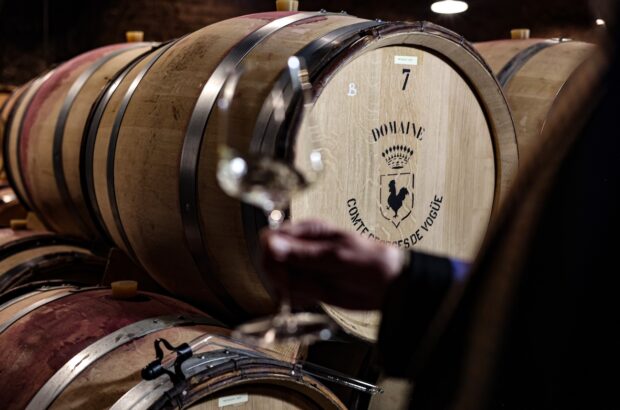'Grand cru in Alsace is infinitely more meaningful than in St-Emilion'
I write this column on the 35th birthday of the Alsace grand cru system. For humans, it’s the midway point in a life of textbook length. For high-latitude vineyards, it’s just a start: they should see out the length of our interglacial, which means at least 20,000 years. Maybe more, if we can both keep the ice at bay and avoid cooking the planet.
The Alsace grand cru system has been assailed with criticisms since its debut in November 1975, including those of Etienne Hugel in these pages (November 2009). I’ve picked holes in it, as has every other commentator on Alsace wines. Yet each time I go to Alsace, the grand cru wines of the growers, cooperatives and merchants seem to me to
be better in quality and more sensually intriguing than the last time. Lieux-dits (named vineyards not classified as grands crus) add to the interest.
The system’s aim was to bring some of the cultural wealth that can only come from a focus on terroir to a region which had long undersold itself, thanks to its unambitious former reliance on varietal wines. Let’s be clear: it’s working. The
vineyard emphasis is lending extra layers of complexity and character to all of the region’s most ambitious varietal wines. It’s now time for the critics to pipe down. Or, better still, to get stuck into the system and help bring further refining improvements to it.
Here’s a quick grand cru biography. Schlossberg kicked the system off in 1975, before it was joined by 25 others in 1983. A further 24 followed in 1992. The rules regarding plantation density and yield were refined in 2001 – and, significantly, the practical management of each grand cru handed over to those using it, with the chance to tighten the rules further if they wished. In 2005, another small step towards responsiveness was taken when Altenberg de Bergheim became (under pressure from Jean-Michel Deiss) the first grand cru to allow blends rather than varietal wines, and when Zotzenberg became the first grand cru to embrace Sylvaner as well as Riesling, Pinot Gris, Gewurztraminer and Muscat. The latest change was in 2007, when the morsellated Kaefferkopf became the 51st grand cru, and the second one to permit blends. I hope there are many more changes to the system ahead.
No one pretends the system is perfect, and if the Hugel, Trimbach and Beyer families expected it to be, then they were more naïve than their long commercial histories would suggest. ‘Sadly,’ wrote Etienne Hugel in November 2009, ‘the term “grand cru” on an Alsace label is in itself absolutely no guarantee of supreme quality.’ Sadly, it isn’t in Burgundy, either. And grand cru in Alsace is infinitely more meaningful than the derisory use of this term in St-Emilion. We can always argue about the precise delimitations, but Alsace’s grands crus do indeed include most of the region’s best sites: magnificent vineyards which have been historically known, celebrated and worked since the Middle Ages. In St-Emilion, you get a grand cru just for lowering your yield by 6hl/ha, agreeing to mature your wine for 14 months and sell it in a bottle. It has absolutely no bearing on the position of a property’s vineyards within the large and
heterogenous St-Emilion AC. It’s an embarrassment and a joke. That’s not the case in Alsace.
The issue of yields is interesting. Average yields in the grands crus were 49.4hl/ha in 2008 and 53.8hl/ha in 2009. Too much, no doubt, to make great wine of density, succulence and texture: Zind-Humbrecht’s grand cru yields in 2008 ranged between 21hl/ha and 39hl/ha. But how much is too much? Those who wish to make dry wines from fully ripe Pinot Gris and Gewurztraminer in Alsace (as Trimbach and Hugel do so well) can’t afford to let yields sink that low or the wines would be far too rich in sugar to ferment through to dryness. Hugel and Trimbach must therefore keep yield
levels up. Olivier Humbrecht MW now makes a bone-dry ‘Riesling Terroir d’Alsace’ with just 12.5% alcohol. To do so, he has to take a yield of 85hl/ha.
Alsace needs its grand cru system. The truth is that the vineyard spectrum here is every bit as complex as it is in Burgundy, in the Mosel or in Rheingau; indeed in terms of geological intricacy it eclipses those regions. For historical reasons (four changes of nationality since 1870) Alsace was late out of the starting blocks in explaining these nuances to itself and to the world at large – but it is now up and running, and in a couple of hundred years the system will work deliciously well. No one, then, will talk of the greatest incarnations of a variety without vineyard names being attached to those discussions. The region’s distinguished old merchants can carry on spitting in the soup if they want, but Alsace’s best producers are now using grand cru and lieux-dit sites to create wines far greater in quality than their grandparents dared dream of. I wish the system many happy returns.
Written by Andrew Jefford






